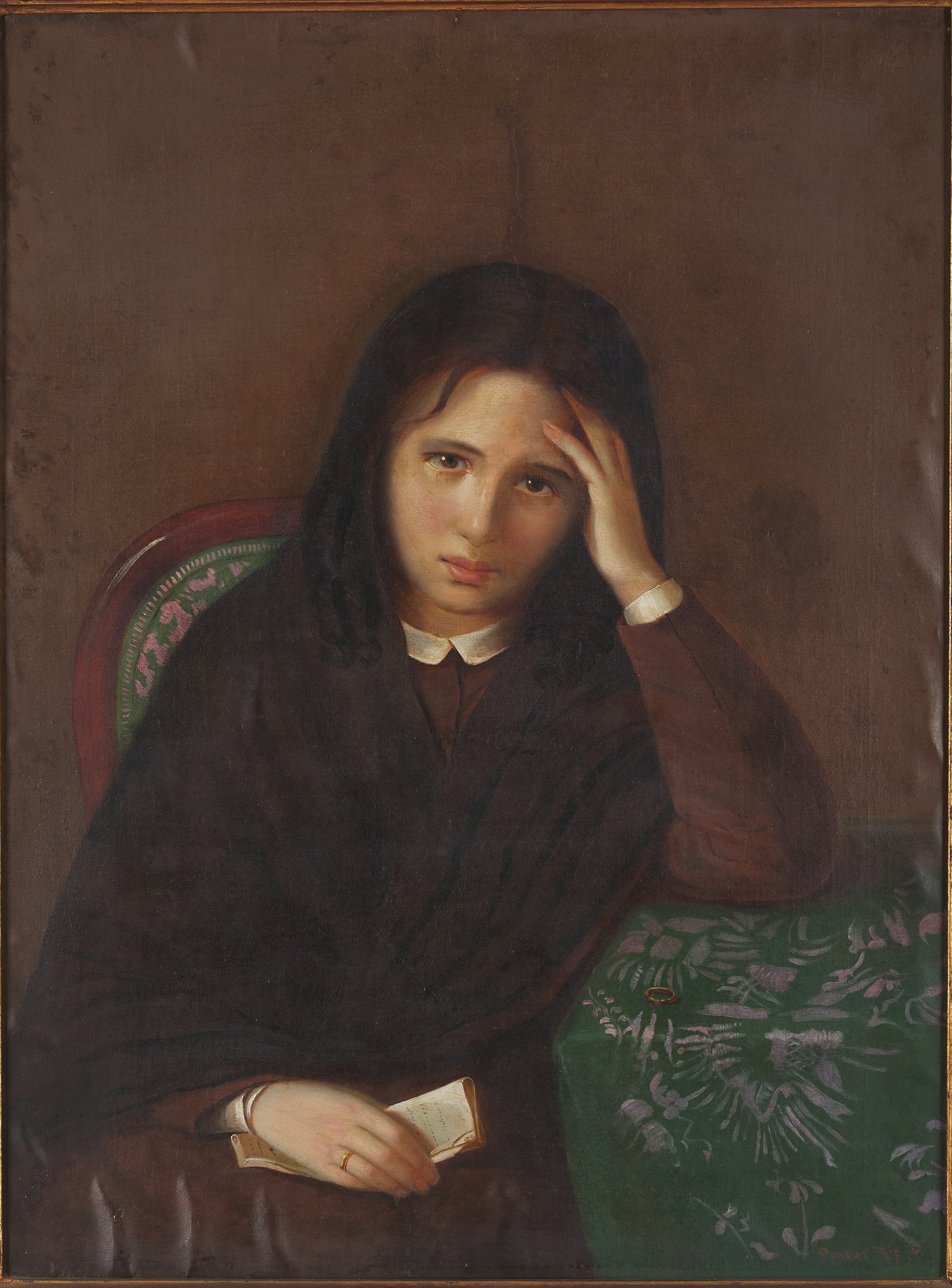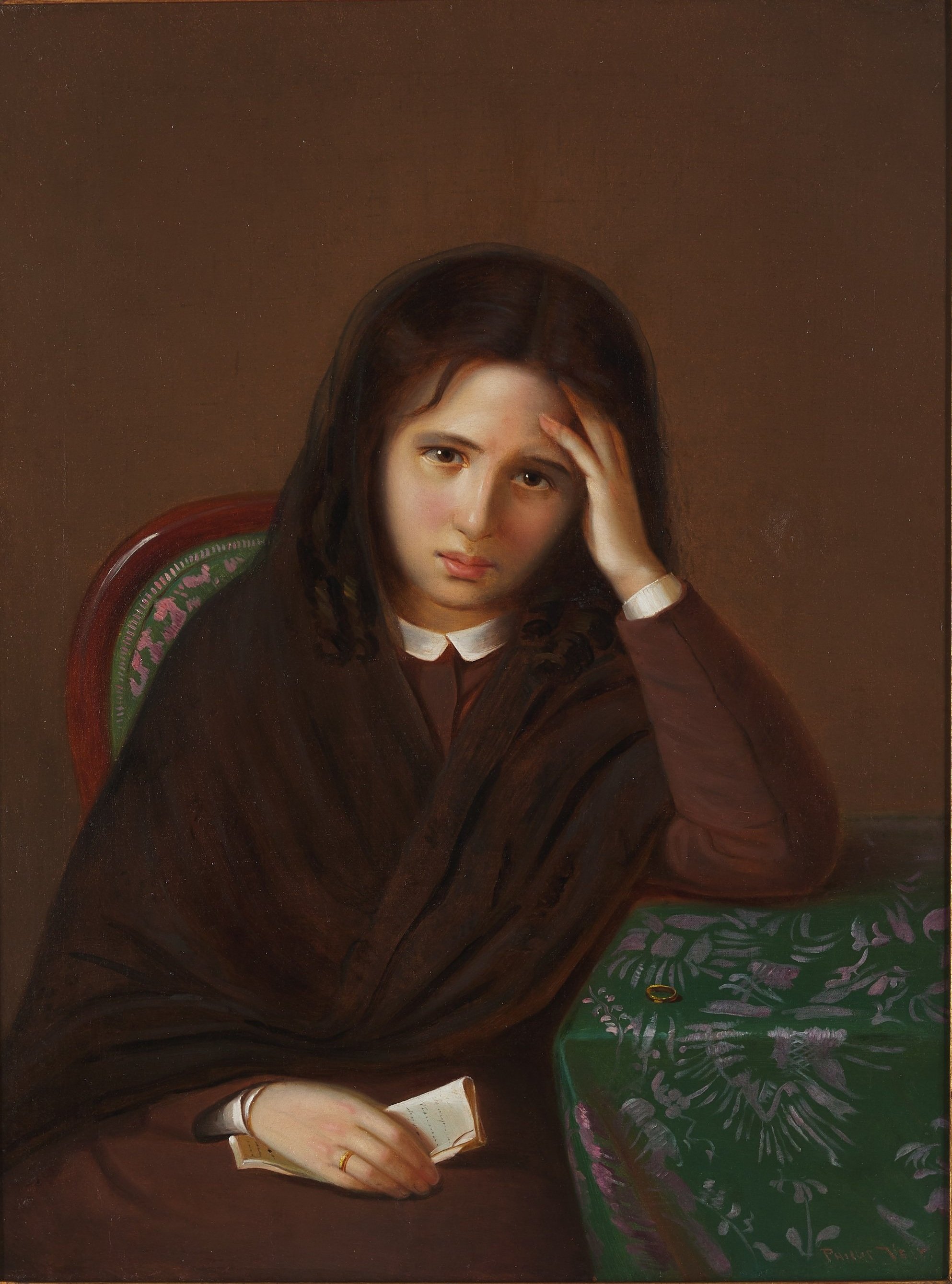"I have always liked the painting... it tells a story..."
Is there truly any better reason to display a work of art in your home? Purchased in the 1950s, Portrait of a Woman has been in the family of its current owner for nearly 70 years. Believed to be attributed to 19th-century German painter Philip Vieth, this captivating painting holds many secrets. The woman is looking straight at the viewer with a look of distress, one hand on her head and the other clutching a letter. On the table, interrupting the pattern of the tablecloth is a single gold ring.
Before Treatment
After spending 42 years hanging in a dining room, the owner has pieced together a backstory for this enthralling woman. "The subject is a girl who lost her husband in a war... note her wedding ring on her right hand, which is a symbol of widowhood. Then there is perhaps his ring on the table, which suggests that someone other than her husband sent it to her along with a letter possibly explaining circumstances. Her countenance is sad, which is consistent with a personal loss."
The painting arrived at The Conservation Center in obvious need of conservation. The owner shared, "The painting was in pretty bad shape when I brought it to The Center; the canvas was wrinkled, tired, and dirty." Examination showed that the painting had undergone restoration at some time in its past. The canvas had been adhered to a secondary canvas with glue, and the lining canvas had been toned to appear darker. The original tacking edges were missing, likely having been removed before the lining.
In raking light, the deformations and tear repairs are more easily visible.
The painting exhibited moderate deformations along the edges where the original canvas was delaminating from the lining canvas. The painting also showed previous repairs that no longer matched, including repaint around the artist's signature. The varnish layer was also discolored, and a synthetic varnish layer was also added, likely at the time of repainting.
Detailed image of canvas edge.
A large, raised, U-shaped tear was present above the women's head, approximately 8.5 inches long. There was evidence of other tears to the right of the woman's raised hand and across her chest.
Detail of U shaped tear above the figures head.
The first step of the treatment was to stabilize the paint layer, consolidating and surface cleaning the entire painting. Then, the conservator carefully removed the discolored varnish and previous retouching. During this process, the conservator discovered that the whole background was repainted, covering a veil over the woman's hair.
Image of painting under UV light, showing areas of previous repaint.
The painting was then removed from the stretcher to remove the lining and old excess glue mechanically with a scalpel. The canvas deformations were then flattened, and the tear repaired, using a variety of conservation techniques. The painting was then re-lined using modern lining techniques to support the original canvas.
The final cosmetic treatment steps included filling the areas of paint loss, applying an isolating layer of varnish that will separate the original paint from the conservator's inpainting, and a final protective sacrificial varnish layer.
After treatment; note the veil is now revealed.
Ready to return to its place in the dining room, Portrait of a Woman will continue to be enjoyed by its owner for years to come. "The Center did an amazing job bringing it to life...I am very pleased with the outcome."








